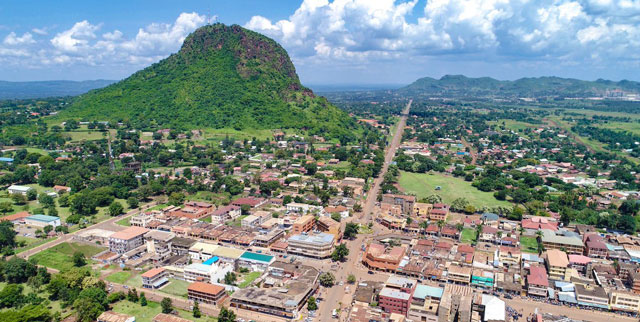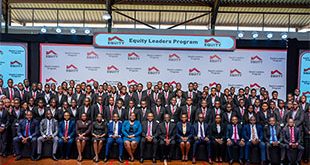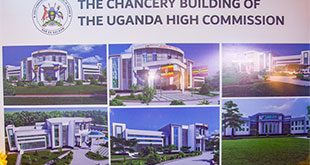
COMMENT | Okumu Kadoketch | In the heart of Eastern Uganda lies Tororo District; a region historically rich, culturally diverse, and strategically positioned. Tororo is not just a border district; it is a gateway of opportunity. Yet, despite its potential, it remains administratively stretched and developmentally uneven.
As Uganda continues to embrace decentralization as a strategy for inclusive growth, it is time we boldly ask: Should Tororo be split into new districts? And if so, could this transformation catalyze real economic change, generate employment, and empower its people?
This article is not a political argument. It is a development vision; open-minded, people-driven, and grounded in the belief that bringing services closer to the people will bring prosperity closer to their homes.
Why New Districts in Tororo Make Sense
1. Decentralization to Drive Inclusive Development
The creation of new districts from the current Tororo District would bring government services closer to the grassroots. From health care to education, agricultural extension to financial support programs, decentralized units make service delivery more responsive, efficient, and accountable. People in peripheral sub-counties often have to travel long distances for basic administrative services a logistical and economic burden that stifles opportunity.
2. Job Creation and Youth Empowerment
Each new district brings administrative positions, health and education jobs, support services, and construction opportunities. With a youthful population hungry for employment, especially educated youth and diploma holders, district creation could serve as a practical response to unemployment. Beyond public sector jobs, the multiplier effect includes more teachers, local contractors, vendors, and transporters benefiting from emerging markets.
3. Infrastructure and Local Investment Boom
New districts necessitate new infrastructure: roads, office buildings, schools, health centers, water systems, and ICT hubs. This unlocks rural economies, attracts donor and NGO investment, and supports local business growth. District headquarters also attract banks, telecom services, and NGOs, which further stimulate local commerce.
4. Equitable Resource Distribution
With Tororo’s current structure, some areas feel left behind; neglected in planning and underrepresented in funding. Splitting the district ensures equitable distribution of government funds and attention. Local leaders in smaller administrative units can better understand and prioritize unique community needs, from youth projects to maternal health services.
5. Cultural and Community Identity
Tororo is a mosaic of communities; Jopadhola, Iteso, Bagwere, Banyole, Basoga, and others. While unity is vital, recognizing and empowering communities through self-governance strengthens inclusion and cultural pride. New districts would provide platforms for local cultures to be celebrated, preserved, and leveraged for tourism and education.
What Names Could the New Districts Take?
Any conversation on new districts must include inclusive, thoughtful naming that respects geography, history, and identity.
The hidden beauty about Tororo summarized
Malaba
Anchored by the Uganda-Kenya border post, Malaba could serve as a logistics, trade, and customs hub; integrating cross-border commerce and regional transport.
West Budama in general
Covering sub-counties like Nagongera, Kisoko, Mulanda, Iyolwa etc this area is agriculturally fertile and culturally vibrant. With road connections to Butaleja, Namutumba and Tororo, it’s ripe for agro-processing and rural industrialization.
Tororo Municipality
The current urban area focused on urban planning, digital services, higher education, and light manufacturing.
Osukuru Highlands
Known for its mineral resources and proximity to Tororo Cement, this could anchor mining, value addition, and environmental conservation efforts.
Kwapa-Molo Plains
With its lowlands and growing markets, this area could become an agricultural and trade district, focusing on rice, maize, and livestock development.
Paya and Kirewa
This unit could prioritize rural enterprise, artisan development, and local governance reform.
Let’s Be Honest: What Are the Concerns?
Skeptics argue that more districts mean more administrative costs, duplicated services, and political patronage. These are real concerns, but not insurmountable. If district creation is based on data, planning, and genuine development needs; not tribal or political convenience it can work. Transparency, civil society oversight, and participatory planning are key to ensuring that these become development engines, not bureaucratic burdens.
What Has Been Done?
Feasibility Study
Led by the Ministry of Local Government in partnership with local leaders, civil society, and citizens.
Community Engagement: Usually people have a say in where, why, and how new districts should be formed.
What Has Be Done?
Plan for Sustainability
Develop a phased plan with budget forecasts, human resource needs, and infrastructure priorities.
Enforce Accountability
Each new district must be held accountable through regular audits and public engagement mechanisms.
Conclusion: Turning Boundaries into Opportunities
Creating new districts in Tororo is not about dividing people; it’s about multiplying opportunities. It’s about ensuring that a child in Mella or Kirewa has the same access to services as one in Tororo town. It’s about turning border towns into international gateways, transforming farmers into agribusiness leaders, and giving our youth a reason to believe that home can be a place of hope.
Let’s keep the conversation open, inclusive, and focused on development; not division. The future of Tororo lies not in its borders, but in the potential of every citizen within them.
*****
 The Okumu Kadoketch is Director Research and Development at Kartics Consults. THIS POST WAS ADAPTED FROM WHATSAPP | okumudavid688@gmail.com
The Okumu Kadoketch is Director Research and Development at Kartics Consults. THIS POST WAS ADAPTED FROM WHATSAPP | okumudavid688@gmail.com
 The Independent Uganda: You get the Truth we Pay the Price
The Independent Uganda: You get the Truth we Pay the Price



